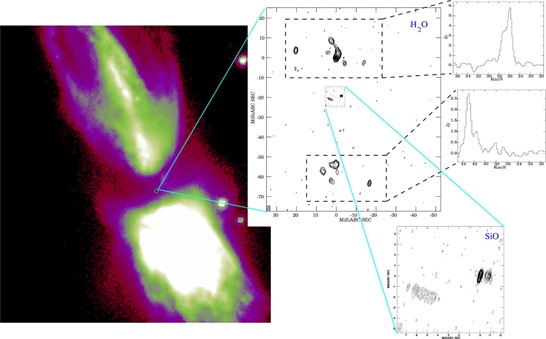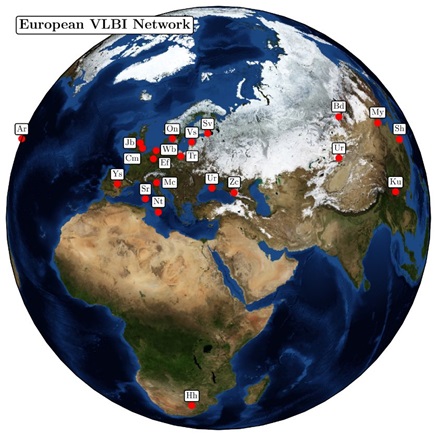Observatorio Astronómico Nacional
Infraestructura científica con más de 200 años

Interferometría de Muy Larga Base
La Interferometría de Muy Larga Base es una técnica interferométrica empleada en radioastronomía en la cual un conjunto de radiotelescopios o antenas situados en distintas partes del planeta (o en el espacio) observan simultáneamente el objeto que se quiere estudiar. Los datos de cada antena son almacenados y marcados con una información de tiempo muy precisa (reloj atómico). En tiempo diferido, pero también posible online y en tiempo real, se leen todos los datos en un ordenador muy potente (llamado correlador) que recrea las condiciones exactas del experimento y hace interferir entre sí las señales grabadas en cada una de las antenas, para obtener así las imágenes de las observaciones.
La grande ventaja de esta técnica es que no posee limitaciones en la distancia entre las antenas, siendo éstas totalmente independientes sin necesidad de estar conectadas físicamente. Dado que la resolución de un interferómetro es directamente proporcional a la separación entre sus elementos, el VLBI es la técnica astronómica que proporciona la más alta resolución espacial (nitidez) posible, del orden del milisegundos o microsegundo de arco (equivalente al tamaño de una moneda en la Luna vista desde la Tierra).
El campo de aplicación de esa técnica es muy amplio, algunas de las más importantes, en las que el I.G.N. participa, son:
- Astronomía: definición del referencial celeste, emisiones de tipo máser, núcleos de galaxias activas, cuásares, agujeros negros, etc.
- Geodesia: rotación terrestre (y sus variaciones), orientación de la tierra, movimiento tectónicos, deformación de la corteza, etc.
- Espacial: seguimiento de sondas espaciales.
Las principales redes de VLBI que existen en la actualidad son: la EVN (Europa), VLBA (EEUU), GMVA & EHT (Mundial), VERA (Japón) y KVN (Korea).


